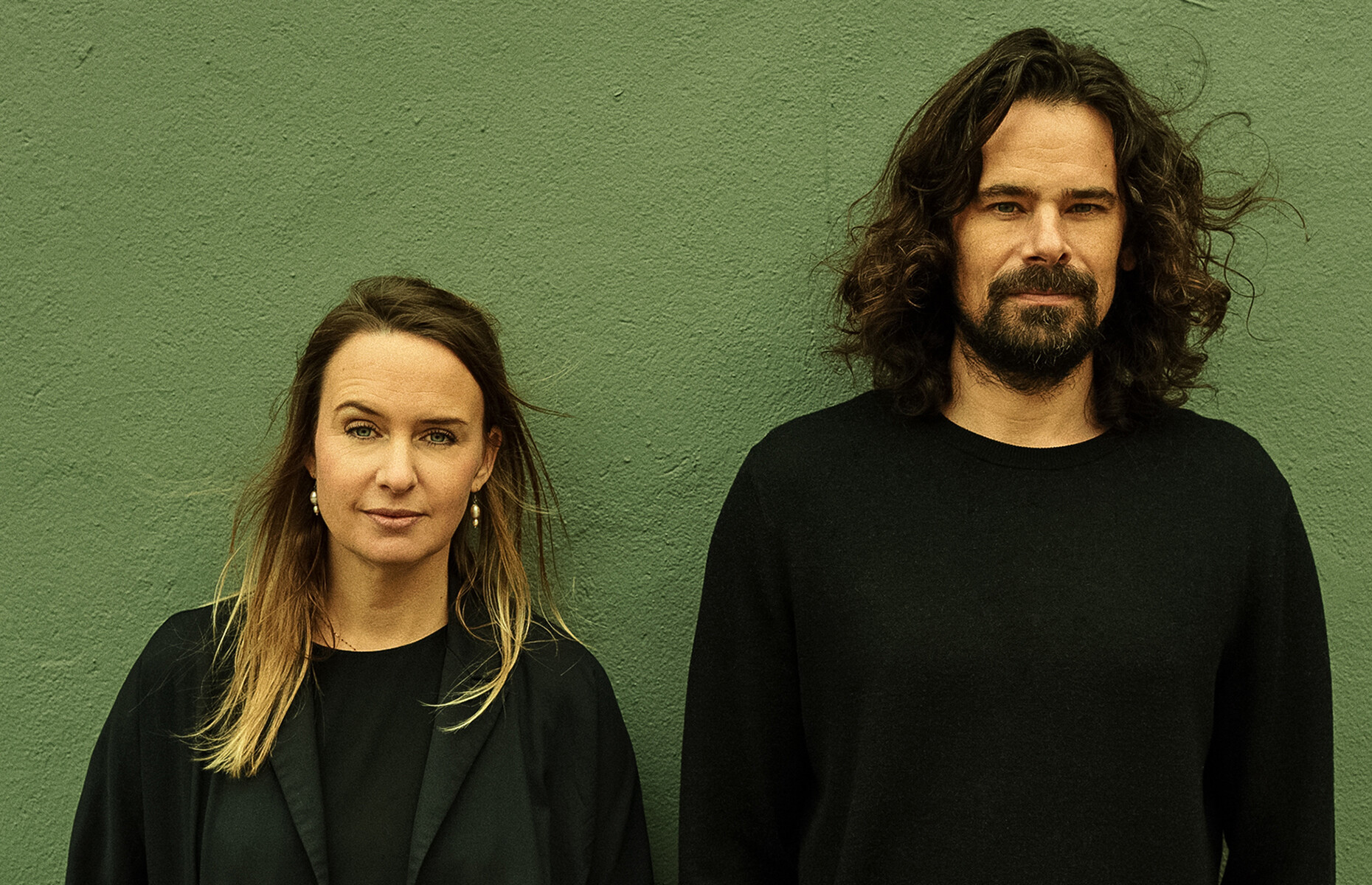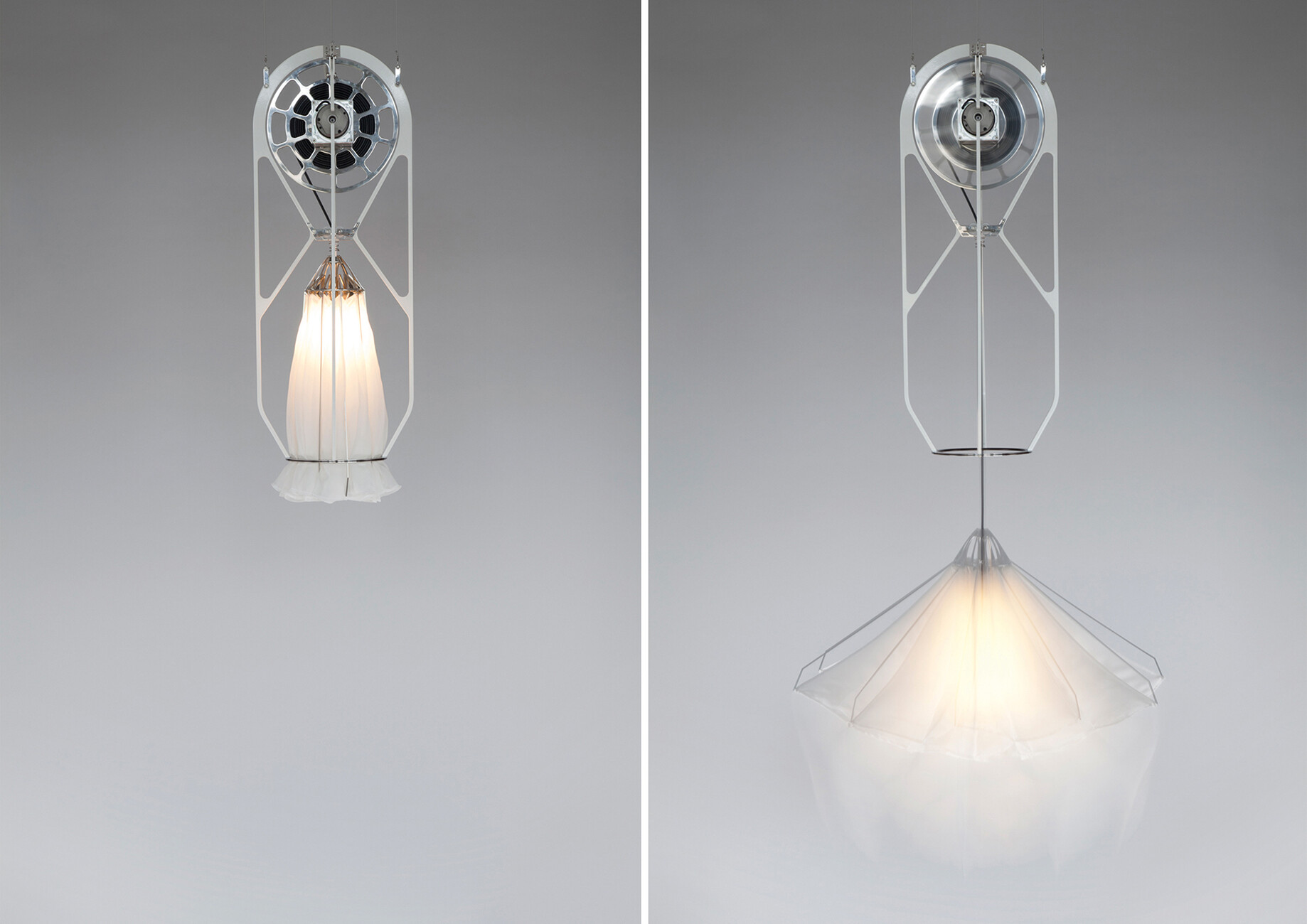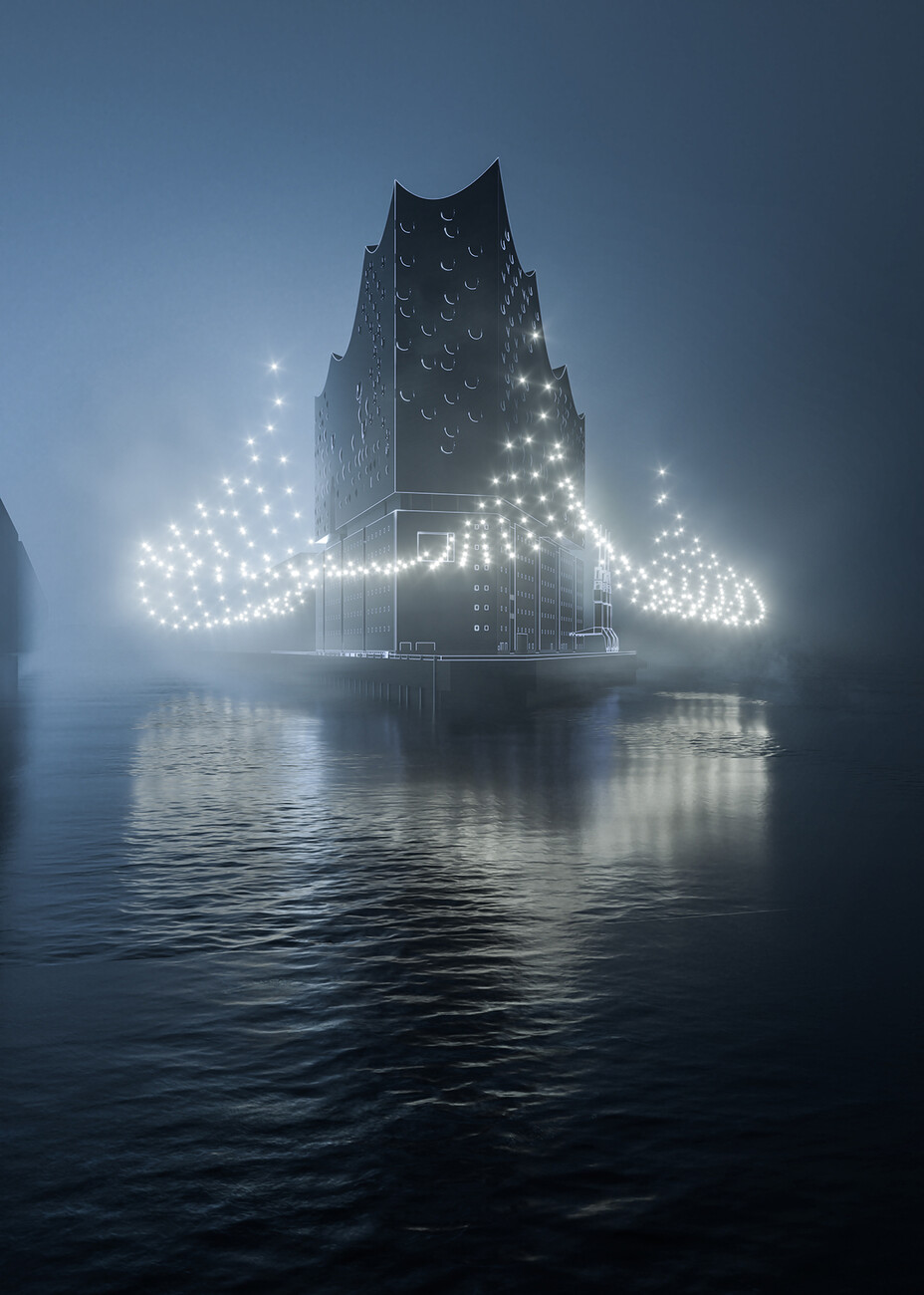Designing Emotion
Anna Moldenhauer: Lonneke, you and Ralph Nauta are the founders of Studio Drift. Your current solo exhibition at the MK&G in Hamburg is your most comprehensive exhibition in Germany to date. Three works are on show, "Shylight", "In 20 Steps" and "Fragile Future II". What is it that you are trying to convey in your work?
Lonneke Gordijn: What we are generally attempting to achieve with our work is for visitors to feel that there is a relationship between the space, the work and themselves. I think that one of the most important messages is the reciprocal relationship between our environment and how we feel and live. In my opinion this is often misunderstood or underestimated. These could be reasons why we react so little to our environment. We opted for “fragile Future II” because the exhibit with its complex structure made of dandelion seeds, phosphor bronze, LED lamps and Perspex is a good introduction to our work as a whole. People need to get up quite close in order to be able to see the details and that’s what we want – proximity to our viewers. We don’t want there to be any barriers, their reception has to be genuine and unobstructed. For “In 20 Steps” and “Shylight” we are working with movement, and the exhibits are more abstract. Whereas in “In 20 Steps” our viewers’ attention is positively drawn into the pace by the repeated motion of the pairs of glass double-leaf doors, “Shylight” is more choreographic; with the alternating processes of opening and closing the silk luminaires, it offers moments of peacefulness and brightness. Taken together, the three works offer a chance to feel a connection with nature. And we would hope that they can also carry this experience over into everyday contexts.
Why do kinetic elements feature in your work?
Lonneke Gordijn: As an artist you make intuitive decisions and understand only later why a work needs these elements – it was the same thing for us with the subject of kinetics. To begin with, we did a great deal with light and then moved on to movement. What links the two is that they are both indicative of and stimulate life, are instrumental in transformations and development. As human beings we cannot entirely imitate this process. Furthermore, movements are extremely strong communicators. I find it ideal when visitors start by allowing a piece to work on them and feel what emotions it evokes in them before they turn and start reading the explanatory wall text.
I think that you achieve that in a large number of cases. If a work moves visitors automatically stop in their tracks – it’s a kind of reflex.
Lonneke Gordijn: Yes, as humans we can relate to this way of communicating very well, it speaks directly to our bodies and our hearts. Movement causes us to feel and that is what we are hoping to achieve with our work – for people to get into the type of rhythm which is actually very natural – and away from the hustle-&-bustle of this crazy life in which we find ourselves. This communicator and activator of emotions is incredibly important in our work and is now part of anything we construct, as well. Whenever we start working on new ideas or on developing existing ones what makes the difference is whether or not the work appeals to us at an emotional level. We can learn from movement in nature – there is a great deal of untapped potential there.
In your work you ask fundamental questions about the relationships between nature, humans, and technology, pointing out the fragility and fascination of our constructed world. Why is it that you decided to represent these subjects in such an aesthetic way in your work?
Lonneke Gordijn: I like starting my work in a place where I can be amazed and fascinated. There is so much beauty in nature and this inspires us. We don’t decide in advance what our work should look like, but movement has always been a starting point for us. From there, we have attempted to find a way that shows the processes off and does not try to cover them up, one that feels logical and does not represent a conflict between nature and technology. The technology behind our work is not intended as a distraction, instead, it is meant to be clear and logical. A system, an interaction that works. One thing we don’t want to do is to convey a negative message, but instead to trigger fascination and enthusiasm. In my opinion, these are more productive energies than anxiety or anger.
With your work, you are offering your viewers a moment of harmony, a kind of sheltered place. The emotions that you engender in it are so strong that some people have been moved to tears. Just when is it that a work is complete, in your eyes?
Lonneke Gordijn: We know intuitively when that moment has arrived. It is a strong feeling when everything is in harmony. It is difficult to describe but until that time arrives, we haven’t finished. The technology that we use for our work is extremely complex and has many different aspects for which we need to achieve a balance – from the sound of the motors to the right material. It helps that we work as a duo. For me, there is no better form of reassurance than when we are both happy with the results. We don’t want to make any compromises with our work.
You can tell that by looking at the works. They are so perfect that you wouldn’t like to add any details to them or to take anything away from them. This perfection conditions a very time-consuming manufacturing process – as with the “Dandlelights”, for which dandelion seeds are individually stuck around an LED light, a process that takes hours. Why is this precision so important to you?
Lonneke Gordijn: I am quick to get angry about things that kind of block the essence of a thing. This is, in fact, a kind of perfectionism but what is perfect and what isn’t is a matter for debate. I think the reason is that we don’t want to draw viewers’ attention to unimportant details. Our works are meant to be pure. At the same time the kinetics, for example, are never 100 percent mechanical, they are more like natural processes. That is crucial as far as we are concerned but also difficult to achieve. We play with the balance between control and non-control and choose our materials accordingly. These are results that are part of the process. At the outset, we don’t know which way our path will be taking us.
The world as constructed by humans is one central topic of your work. At the press conference at the private view, you mentioned that we are the only species on Earth that attempts to control its environment with its own rules, instead of following the rules of nature. What is it about our current constructed world that you would change if you could?
Lonneke Gordijn: Everything. Especially the way that we make decisions. It is painful for me to see how we treat the world in which we live. Nature’s system allows all structures to work together in a fascinating way, it creates a balance on its own terms. Human beings disrupt that balance dramatically with their own systems and we follow them unquestioningly. The fact that we are the only creatures to have achieved a certain autonomy is fascinating but to get there we have lost those essential insights from nature. From science we can understand how nature works and should not be using that knowledge to manipulate it. The security that we are thus creating is deceptive because nature cannot be controlled. I think that the human race should be much more intelligent given all the knowledge that we have acquired and the technology that we have developed to date. With our work we are therefore attempting to get our viewers to start thinking, even though our range at exhibitions in establishing showing art is limited.
To mark the 5th anniversary of the completion of the Elbphilharmonie at the end of April there will be a staged exhibition along the side of the building designed by Herzog & de Meuron. With hundreds of illuminated drones, you will be staging a choreography to the 2nd movement of Thomas Adès’ piano concerto. How did you develop that?
Lonneke Gordijn: We embarked on the project a year and a half ago and started by letting the building and its environment work on us in order to get a feel for what kind of performance or installation would be right for this particular location. Initially, it is our sensory perceptions that are more important in this respect than anything that might be technically possible. Using these feelings as our starting point, we then move on to ideas. Herzog & de Meuron’s building is absolutely fabulous and we asked ourselves just what it is that we want to express, in order to discover the relationship between the building and us. Something that we found extremely interesting was the interrelations between this building, the very shape of which conveys movement, and the location which is surrounded by natural wave movements. Moreover, the building has been designed for the performance of music and sound waves are also movements, movements that reach us. In our work our aim is to connect all these vibrations with one another – to set the building itself in motion, so to speak. A fixed installation would not have been right for this and, in view of the strong wind directly on the Port of Hamburg, would have been nigh on impossible to implement. By contrast, the drones respond to the building, they complement it. We are currently still at the development stage and are trying out different scenarios for the public. It is often a lengthy process until a work feels right. Lengthy, but definitely worthwhile.









